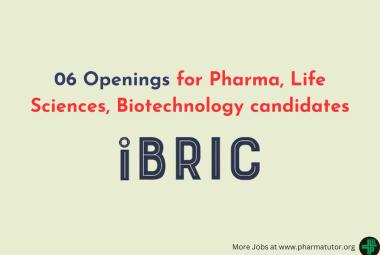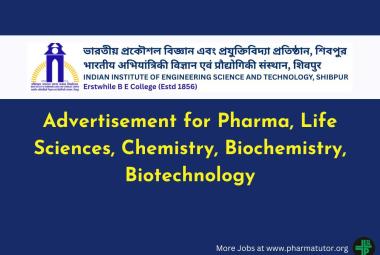{ DOWNLOAD AS PDF }
ABOUT AUTHORS:
Surya Pratap Singh*, Meenakshi Sahetya1, Mahaveer Prasad khichi1*, Yogesh Yaduwanshi2
1Department of pharmaceutics, Kota college of pharmacy
2Department of pharmacology, Kota college of pharmacy,
Rajasthan, India
*sp.kota91@gmail.com
ABSTRACT
The purpose of this paper is to focus on drug delivery system developing by such polyelectrolytes and most focused on targeting of drugs to specific sites have aroused as revolution in pharmaceutical field, thereby, giving rise to drug delivery systems. Polymers have gained much importance indrug delivery especially those which respond in some desired way to change in pH, temperature, electric or magnetic field. For this reason they are very frequently and extensively used as excipients in design and advancement of controlled and/or sustained release products. The scope of polymers used in dosage form design can be increased by several approaches such as modification of their chemical structure, by combining different polymers in physical mixtures or by formation of polymer-polymer associations such as polyelectrolyte complexes.
REFERENCE ID: PHARMATUTOR-ART-2079
INTRODUCTION
The term polyelectrolyte can be more precisely defined under class of macromolecules, as the polymers that contain a net negative or positive charge at near neutral pH. Above all, the polyelectrolyte belongs either to the group of cationic or to the group of anionic polyelectrolytes depending whether the polyelectrolyte carries positive or negative charges. Mixed architectures with both negative and positive monomeric units belong therefore to the class of polyampholytes. A special case of polyampholytes is given by polybetaines (positive and negative charges on eachrepeating unit). Irrespective to the sign of charge it can be distinguished between two other types of polyelectrolytes: strong (quenched) or weak (annealed) polyelectrolytes. The number of nominal charges is irrespective to changes in pH for strong polyelectrolytes, where as the number of nominal charges can be easily adjusted by pH for weak electrolyte.[1]
CLASSIFICATION OF POLYELECTROLYTES
Polyelectrolytes are both inorganic and organic exhibiting both flocculation and deflocculation properties. Inorganic polyelectrolytes exhibitingsedimentation properly are coagulants rather than flocculants, whereas organic polyelectrolytes, exhibiting sedimentation, property, are invariably high molecular weight synthetic polymers. Inorganic flocculants are salts of multivalent metals like aluminium and iron. The process of sedimentation these salts exhibit is totally different from the organic types.
The polyelectrolytes are classified into various types.
1. Based on origin:
a) Natural polyelectrolytes: Nucleic Acids, Carrageenan, Alginates.
b) Chemically modified polymers: Pectin, Chitin, Cellulose based, Dextran based.
c) Synthetic polyelectrolytes: Poly (vinyl benzene tri alkyl ammonium, Poly (vinyl sulfonic acid), Poly (acrylic or methaacrylic acid), Poly( styrene sulfonic acid), Poly(acryl amido alkyl trialkyl ammonium).
2. Based on the charge:
a) Anionic (negatively charged):
The acrylic acid unit of a polymer ionised to produce a negatively charged polymer backbone. Since the charge carried by the active portion of polymer is negative all such polyelectrolytes are known as anionics.The common anionic polyelectrolytes are homo polymers and co polymers of NaSalt of acrylic acid with acrylamide which are generally termed as polyacrylamides.
b) Cationic(positively charged):
In the case of cationics the positive charge carrying nitrogen is a part of the polymer. In the case of nonionics there is no charge on the base polymer as there are no ionisable groups present in these.Cationic polyelectrolytes are homopolymers or Copolymers with Acrylamide of three major cationic monomers.A wide range of cationic polyelectrolytes are hence available depending on the cationic monomer present, the charge density and the molecular weight. Poly(dimethyl diallyl ammoniam chloride) and copolymers with acrylamide are type of cationic.
c) Nonionic (no charge):
The nonionic polyelectrolytes are by and large homopolymers of acrylamide with a wide range of molecular weights. Though countless polyelectrolytes are theoretically possible depending upon the charge density and molecular weight a few of them have found commercial application. This limits the usage of polyacrylamides of a specific pattern for a specific application irrespective of the source of supply. [1]
MECHANISM OF POLYELECTROLYTES
There are two possible mechanisms given for the phenomena of polyelectrolyte induced coagulation and flocculation.Polyelectrolyte flocculants can be generally divided into two groups, depending on their molecular character and mode of operation:
i. Primary coagulants (eg., polyamine types)
ii. Coagulation aids/flocculants (eg., polyacrylamides)
i. Primary coagulants (eg., polyamine types):
Have high cationic charge density; satisfy the 'cationic demand' of the negatively charged suspended particles and initiate coagulation and formation of flocs. Have low to medium molecular weight which allows a slow building of flocs (provided there is an adequately long contact time between the forming floc and the suspended matter) which gives a maximum removal of suspended solids (maximum turbidity reduction).
ii. Coagulation aids/flocculants (eg., polyacrylamides):
Have low charge density; are used only for building the size of floc by bridging the primary flocs do not satisfy the 'charge demand'. Have very high molecular weight ; this is need to produce large, fast settling flocs by bridging many small primary flocs. [3,4,5]
FACTORS AFFECT MECHANISM:
POLYELECTROLYTES are water soluble polymer carrying ionic charge along the polymer chain. Depending upon the charge, these polymers are anionic or cationic. Polyelectrolytes are available in a wide range of molecular weights and charge densities. Homo polymers of acrylamide are also included in the family of polyelectrolytes though they do not carry any charge. These are called nonionic. Polyelectrolytes have got a wide range of applications right from water purification, oil recovery, colour removal, paper making, mineral processing,etc.
The factors affecting the selection of the appropriate polyelectrolyte(s) for a given process are:
A. The nature of the suspended particles (substrate) :
a) Organic/inorganic content
b) Net surface charge density
c) Solids content of substrate
d) pH of the substrate
e) Temperature of the system (Brownian motion)
B. The end result to be achieved :
a) Rapid separation of the solid matter from the fluid.
b) Clarity of the separated fluid.
C. Dynamic and shear effects :
a) Mixing /conditioning of polymer and substrate
b) Nature of the shear forces associated with the dewatering equipment used. [1,3,4]
APPLICATIONSOF POLYELECTROLYTES
Major applications of flocculants are their inherent solid liquid separating efficiency. This makes polyelectrolytes a unique class of polymers which find extensive application. Some of the major areas of applications of polyelectrolytes[8] are in the following industries:
a) Potable water treatment
b) Waste water treatment
c)Municipal Sewage treatment
d) Paper making
e) Mineral Processing
f) Oil field applications
g) Drilling muds
h) Anticalants and Despersants
CHITOSAN BASED POLYELECTROLYTE COMPLEXES
Introduction:
Chitosan refers to a series of polymers that are deacetylated derivatives of the natural polysaccharide, chitin, with different degrees of deacetylation and molecular weights. It is composed of β-1,4-linked glucosamine (deacetylated units) and N-acetyl-d-glusoamine (acetylated units) (Figure 1) with typical degrees of deacetylation between 70 and 95% and molecular weights between 10 and 1,000 kDa . Highly refined grades of chitosan have been used in pharmaceutical formulations as a release-controlling agent in oral preparations.
Polyelectrolyte Complexes between Chitosan and Natural Polymers:
Chitosan-alginate polyelectrolyte complex:
The negatively charged carboxylic acid groups of manuronic and guluronic acid units in alginate interact electrostatically with the positively charged amino groups of chitosan to form a polyelectrolyte complex. Alginate is one of the most studied anionic polyelectrolytes in complexation with chitosan polyelectrolyte because the complex formed between these two polymers is still biodegradable and biocompatible but mechanically stronger at lower pH values where chitosan dissolve.
Chitosan-carrageenan polyelectrolyte complex:
Carrageenan is the generic name for a family of high molecular weight sulphated polysaccharides obtained from certain species of red seaweeds. There are three basic types of carrageenan, namely kappa (κ), iota (ι) and lambda (λ) carrageenan (Figure 3). It was shown that the nature or type of carrageenan considerably influence the characteristics of the polyelectrolyte complex that is formed with chitosan. The mechanical strength of polyelectrolyte complex gels formed between chitosan and different carrageenans were in the order λ- > ι- > κ-carrageenan. and although the latter two formed stronger gels due to the formation of more cross-links as a result of their double helix secondary structures, these gels were also more brittle.
Chitosan-pectin polyelectrolyte complex:
The polysaccharides of the plant cell wall consist mainly of cellulose, hemicelluloses and pectin. Pectin is a linear polysaccharide composed of α-1,4-linked D-galacturonic acid units, however, this linear structure is interrupted with highly branched regions in the polymer chain (Figure 4). The composition of the pectin molecule varies from source to source, e.g. pectin from citrus fruit contains less neutral sugars and has a smaller molecular size than pectin from apples.[2]
Chitosan-xanthan gum polyelectrolyte complex:
Xanthan gum is an exopolysaccharide secreted from Xanthomonas campestris. It consists of a cellulosic backbone, namely β-(1,4)-d-glucopyranose glucan, with a trisaccharide side chain, namely (3,1)-α-d-mannopyranose-(2,1)-β-d-glucuronic acid-(4,1)-β-d-mannopyranose, on every second glucose residue (Figure 5).
Chitosan-hyaluronic acid polyelectrolyte complex:
β (1,3)-N-acetyl-d-glucosamine and α (1,4)-d-glucuronic acid repeating units linked by β (1→3) bonds (Figure 6). It was shown that the polyelectrolyte complex between chitosan and hyaluronic acid protected hyaluronic acid against enzymatic hydrolysis, but only at pH values different from the optimal pH of the enzyme. The results from this study revealed that the chitosan-hyaluronic acid polyelectrolyte complex unfortunately had less cell proliferation and wound healing effects compared to chitosan alone.
Chitosan-gelatine polyelectrolyte complex:
Gelatine is a heterogeneous mixture of protein fractions consisting of single or multi-stranded polypeptides (Figure 7). It is obtained by partial hydrolysis of animal collagen derived from skin, white connective tissues and bones. It was shown that the polyelectrolyte complex between chitosan and gelatine can only occur at a pH value above 4.7 (which represents the isoelectric point of gelatin and above this value the net charge on gelatine type B is negative) and below 6.2 (above which chitosan start to precipitate out of solution).Chitosan-gelatine polyelectrolyte complex sponges containing tramadol hydrochloride.
Polyelectrolyte Complexes between Chitosan and Synthetic Polymers:
Chitosan-cross-linked-poly(acrylic acid) polyelectrolyte complexes:
Polycarbophil (Noveon AA-1®) and Carbopol are high molecular weight polymers consisting of acrylic acid monomers. The poly (acrylic acid) chains are cross-linked with divinyl glycol to form polycarbophil and polyalkenyl alcohols such as allyl ethers of pentaerythritol or allyl ethers of sucrose to form Carbopol. Cross-linking of the poly (acrylic acid) chains with divinyl glycol in the case of polycarbophil renders only 20% of the carboxylic acid groups inaccessible for interactions with other compounds.[2]
Chitosan-polymethacrylate copolymer (Eudragit) polyelectrolyte complexes:
Polyelectrolyte complexes formed between chitosan with different molecular weights and Eudragit L100 or Eudragit L100-55 were compressed into matrix type tablets containing diclofenac sodium as model drug. Different aspects of the complex systems were investigated such as the molar ratio, structure, swelling and drug release profiles. Results indicated that this polyelectrolyte complex has high potential for manufacture of controlled release drug delivery systems. Factors such as the composition of the polyelectrolyte complex in terms of polymer ratios, Eudragit type and molecular weight of the chitosan influenced the drug release rate from the matrix type tablets.
Chitosan-polyalkylenoxide-maleic acid polyelectrolyte complex:
By changing the alkyleneoxide chain composition, a series of polyelkylenoxide-maleic acid (PAOMA) copolymers can be synthesised with different characteristics (e.g., hydrophilic or hydrophobic, (Figure 11). PAOMA is an anionic polymer that was used to form polyelectrolyte complexes with chitosan in the form of films containing salicylic acid and phenol as model drugs and their drug release rates were evaluated. These films indicated pH dependent drug release behaviour and the hydrophobic PAOMA polymer also showed temperature sensitive drug release behavior.[2]
SUMMARY AND CONCLUSION
It is therefore not surprising that polyelectrolyte complexes are gaining importance in modern pharmaceutical technologyAn extensive research is going on in the area of polyelectrolytes and polyelectrolyte complexes. It has been concluded that polyelectrolyte complexes combine unique physicochemical properties of different polymers with the advantage of retaining high biocompatibility..From the in vitrostudies conducted on chitosan-based polyelectrolyte complexes it is clear that they are valuable excipients with specific properties for efficient dosage form design, which may be valuable in the development of modified drug delivery systems. Polyelectrolytes may efficiently modify the release; improve the stability and character of the drug substances due to their capacity to entrap the drug at molecular level. Hence the polyelectrolyte complexes have great potential in the design of novel drug delivery systems.
REFERENCES
1.S Lankalapalli, V. R. M Kolapalli. Polyelectrolyte complexes: A review of their applicability in drug delivery technology”Indian journol of pharmaceutical sciences, 2009 ,71,(5), 481-487.
2.Josias H Hamman “Chitosan Based Polyelectrolyte Complexes as Potential Carrier Materials in Drug Delivery Systems”Marine drug-MDPI, 2010; 8(4): 1305–1322.
3.Molyneux,P., Water Soluble Synthetic Polymers: Properties and Behaviour,CRC Press, Boca Raton,Florida,1984.
4.Hoover, M.F., Cationic quarternary polyelectrolytes¬A literature review J. Macromol, Sci.-Chem.,1970.
5.Halverson,F & Panzer, R.E.Kirk and D, H.P.Flocculating agents. In Encyclopedia of Chemical Technology, 1975;10(3).
6.Kumar V, Yang T, Yang Y. Interpolymer complexation. I. Preparation and characterization of a polyvinyl acetate phthalate polyvinylpyrrolidone (PVAP-PVP) complex. International Journal of Pharmaceutics. 1999; 188: 221-232.
7.Lankalapalli S, Kollapalli VRM. Polyelectrolyte Complexes: A review of their applicability in drug delivery technology. Indian Journal of Pharmaceutical Sciences. 2009; 71(5): 481-487.
8.Dautzenberg H, Jaeger W, Kotz J. Philipp B, Seidel C, Stscherbina D. Polyelectrolytes: Formation, Characterization and Application. Polymer International. 1994; 38(1): 106.
9.Dobrynin AV, Rubinstein M. Theory of polyelectrolytes in solutions and at surfaces. Progress in Polymer Science.2005; 30: 1049-1118.
10.Krone V, Magerstadt M, Walch A, Groner A , Hoffmann D. Pharmacological composition containing polyelectrolyte complexes in microparticulate form and at least on active agent. United State Patent 5700. 1997; 459.
11.Bhupendra G. Prajapati, and Dr.Krutika K. Sawant, Poly Electrolyte Complex of Chitosan Alginate for Local Drug Delivery, International Journal of ChemTech Research,2009;1(3):643-648.
12.Yan XL, Khor E, Lim LY, Chitosan-Alginate Films Prepared with Chitosans of Different Molecular Weights. J Biomed Mater Res. 2001; 58(4): 358-65.
13.Kim HJ, Lee HC, Oh JS, Shin BA, Oh CS, Park RD, Yang KS, Cho CS., “Polyelectrolyte complex composed of chitosan and sodium alginate for wound dressing application” J Biomater Sci Polym Ed. 1999; 10 (5): 543-56.
14.Kok Khiang Peh and Choy Fun Wong, Polymeric Films As Vehicle For Buccal Delivery: Swelling, Mechanical, and Bioadhesive Properties”. J Pharm Pharmaceut Sci. 1999; 2 (2): 53-61.
15.Stefania racovita, Silvia vasiliu and Cristina Doina vlad, New Drugs Delivery Systems Based On Polyelectrolyte Complexes Academia Româna Revue Roumaine De Chimie, 2010, 55(10), 659-666.
|
PharmaTutor (ISSN: 2347 - 7881) Volume 2, Issue 2 Received On: 11/012/2014; Accepted On: 13/01/2014; Published On: 10/02/2014 How to cite this article: SP Singh, M Sahetya, MP Khichi, Y Yaduwansi, Polyelectrolytes: as a Drug Delivery System, PharmaTutor, 2014, 2(2), 44-51 |
NOW YOU CAN ALSO PUBLISH YOUR ARTICLE ONLINE.
SUBMIT YOUR ARTICLE/PROJECT AT articles@pharmatutor.org
Subscribe to Pharmatutor Alerts by Email
FIND OUT MORE ARTICLES AT OUR DATABASE









